How To Build A Computer
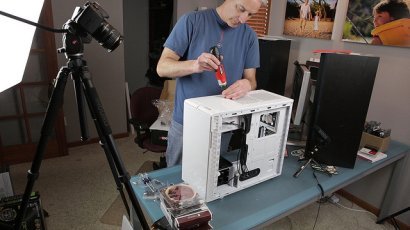
For those of you who have always wanted to know how to build a computer but have never had the opportunity before, Im going to show you the necessary steps that you need to follow in order to make your first computer.
It has become ever more popular to build a computer yourself these days, and you may save money in most cases. I say "may save" because in general, popular computer brands today have become less expensive than they use to be. however, the trade of building it yourself is that you will get exactly what you want and learn about computers in the process.
Before we begin, you need to be familiar with each of the parts needed to build a computer and know what they do. You'll always need each of these parts to build a computer no matter how current the technology is.
Note: If you already know what they are, you may skip this part. Scroll down the page to begin the tutorial or (click here).
I will only talk about what goes into making the computer itself and not the peripherals like the monitor, printer, etc these are basic small explanations of what each computer part can do.
How to build a computer - Parts:
Case: this is where all the components come together. There are a large variety of cases for you to choose from.
Motherboard: this is, as the name implies, the main board which allows the communication of all the components that connect to it. Think of it as the heart of the computer. As long as the heart keeps pumping, there will be communication among the devices connected to it.
Processor: also known as the CPU (short for Central Processing Unit). You can think of it as the brain of the computer because it controls the execution of all the programs. Every little task there is, goes to the processor and it then, executes it. The processor is measured in hertz, for speed. A hertz is a unit of frequency; one complete cycle per second is a hertz.
System Memory: this is known as RAM (short for Random Access Memory). Its function is to hold data that is currently used by applications and software running on the operating system. Once the application or software is closed, the resources borrowed from the RAM will go back to it hence the name Random Access Memory. The memory is measured in bytes. Example: A typical size now days for a RAM memory could be 512 MB (mega bytes).
Hard Drive: the hard drive is meant for storage and is the one device that will hold all the software information that you install in it including, of course, the operating system. Like the memory, the hard drive or hard disk is also measured in bytes although it is meant for a much bigger purpose since it is not a Random Access Memory.
Video Card: this is what creates the images that will appear on your monitor. They are connected in a special slot of the motherboard that is either AGP, or PCI Express. Many current motherboards come with an onboard video to connect a monitor into it.
Optical Drive: these drives are called optical because of lasers that can read data on disks like CDs, DVDs, and now Blu-Rays disc. The different optical drives available are CD, CDR, CDRW, DVD, DVDR, DVDRW, and also the new Blu-Ray players.
Floppy Drive: this drive reads and writes floppy discs and it is used for storage, but its maximum capacity is 1024 Mb (mega bit) or 1 MB (mega byte).
Power Supply: is the device that supplies the power that the computer needs. Each part of the computer that is not directly connected to the motherboard utilizes a wire from the power supply (the motherboard also connects to the power supply). A lot of computer cases already come with its power supply when you purchase them.
Now that you understand what each of the components do to build a computer, the next step from here is to ask yourself: what do I need a computer for? This is a very important question to ask yourself, and especially if you have a budget. For example, if your answer is, for gaming, then you probably want a computer that can support a lot of heavy graphics. So you are looking into getting a hard drive with a lot of storage room (for all your games), a good video card or probably two of them running at the same time for better gaming performance. You will also need a lot of system memory, and a fast processor. This in turn means more money to spend on computer parts. Thats why it is important to know what the use of the computer will be for.
How to build a computer?
What components are needed to build a computer? Once you know what kind of computer you want, then you can determine what components you will need.
Essentially to build a computer, you need: the motherboard, a processor, RAM memory, a hard drive, the computer case, an optical drive, and depending on whether or not the motherboard has onboard audio and video, you may need an audio and/or video card. You can always get those two expansion cards even if the motherboard has them built in so you can enhance the computer performance and quality.
For this tutorial I will use an old computer of mine to show you how each component connects when you build a computer. Though this will be a simple configuration, it will be good enough to give you the basic understanding of how all computers (old and new technology) are connected on the inside.
Note: you should always ground yourself with a wrist strap to avoid static electricity from your body landing into a component and damaging the circuits.
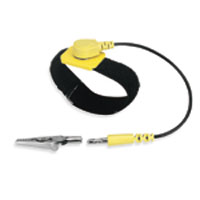
Computer case
Here we have the case and the rest of the parts needed to build a computer. Inside this case you can see the power supply and its wires hanging. Remember, each part of the computer that is not directly connected to the motherboard will have one of these wires connected into it for power. Everything else is powered by the motherboard which in turn is powered by the power supply.
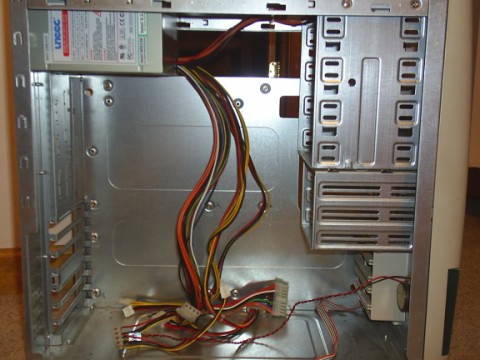
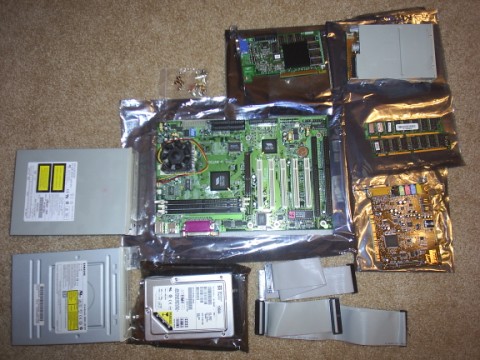
Motherboard
Here we have the motherboard. This is the very first component that gets installed in the computer case. This will make an easy installation for the rest of the computer parts. Simply place the motherboard into the case. It will fit in one way only and then use the screws to hold it tight. Then connect the power from power supply (see below).
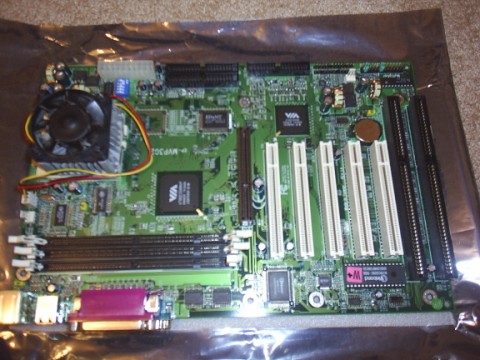
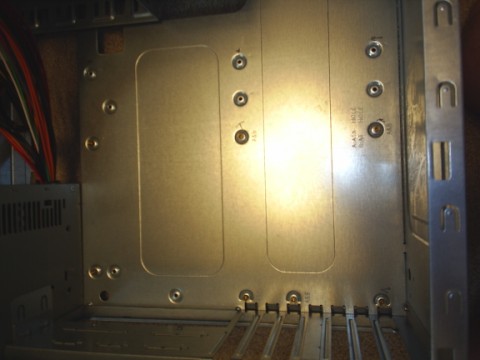
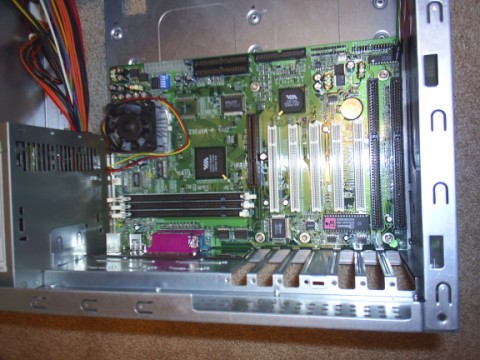
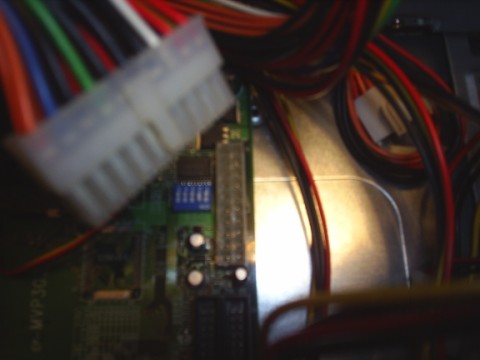
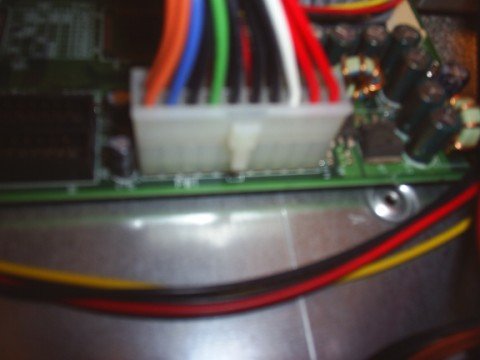
This motherboard already has the processor connected to it. If you want to see what a processor looks like, you can always Google the word processor and look at the images. As the rest of the parts of a computer, the processor can only connect one way depending on the positioning of the pins. You cant go wrong with that or any other part.
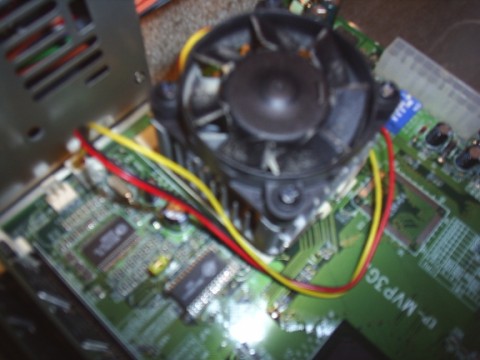
System memory
The RAM is always located right next to the processor slot, so you will never have problems finding it. Its shape is long and rectangular just like in the picture below, and like I mentioned before, it only fits one way. Be sure to check you motherboards manual so you buy the right RAM that is compatible with it.
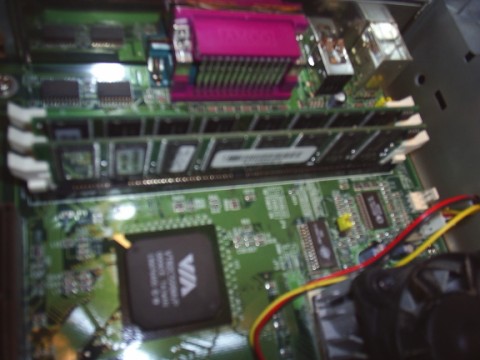
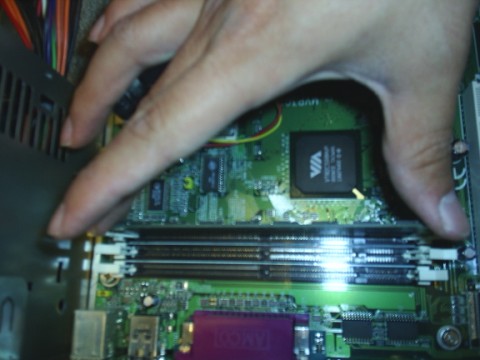
Video card
Next is the video card which goes, in this case, in the AGP slot which means accelerated graphic port. This is the brown connector in the middle of the board (refer to the image above in the motherboard section), and its especially made for computer graphic expansion cards. Newer technology now uses a port called PCI Express which is faster than AGP so is able to render graphics faster for greater performance.
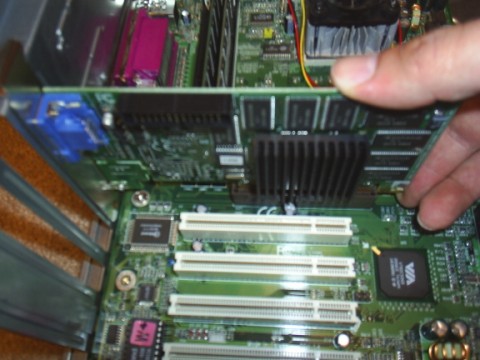
Sound card
Most computers now days come with built in sound, and you can always expand with a sound card of your choice. For this tutorial, we will install a sound card since it is an older machine and it does not come with built in sound. It goes in any of the white slots called PCI which means Peripheral component interconnect.
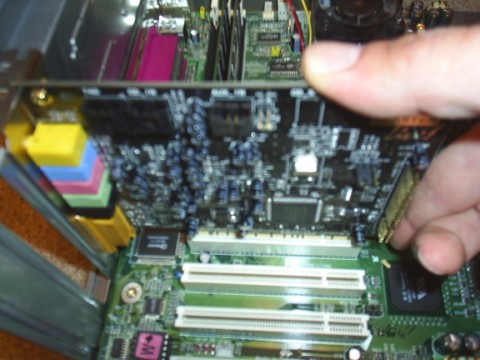
Hard drive, floppy drive, and optical drive
Here I will show you how to connect the hard drive, floppy drive and the optical drives. It is actually very simple. All they need is a data cable and the wire for power that comes from the power supply (see the process in order below).
Hard Drive & Floppy Drive
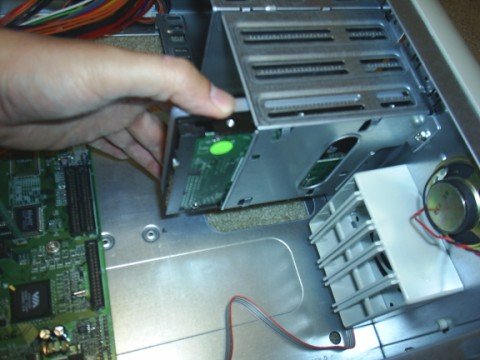
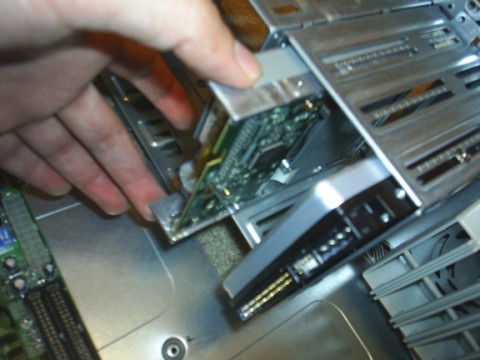
Now we connect the data cables and the power. Remember, like everything else, it can only go in one way (see below).
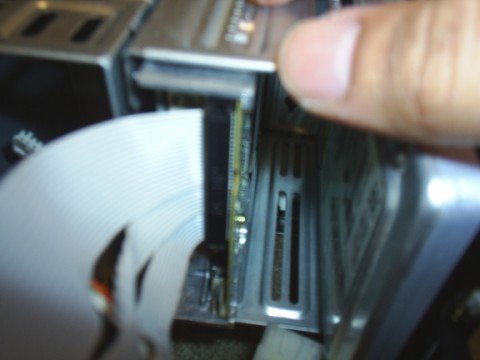
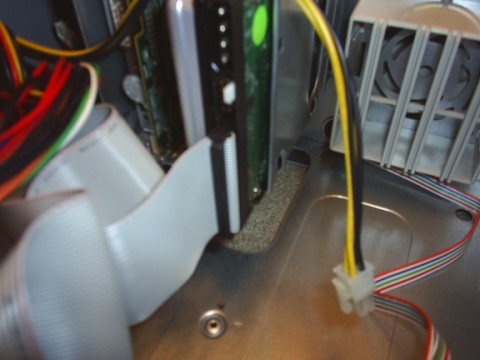
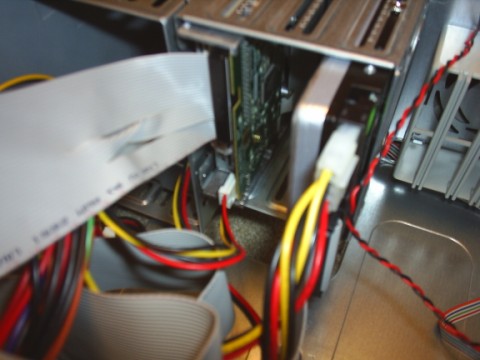
CD & DVD Drives
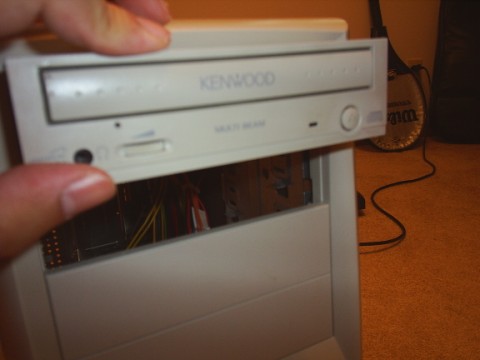
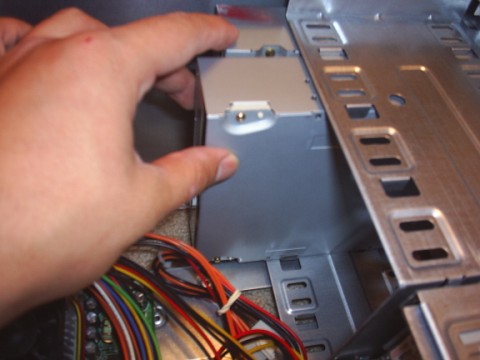
And now the data and power cables.
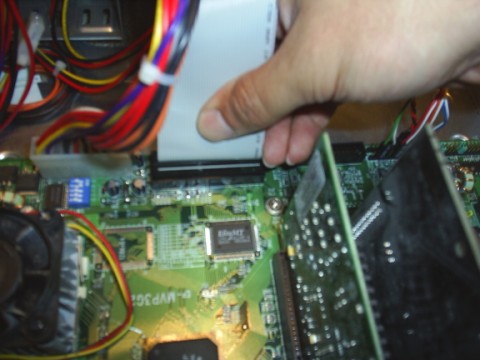
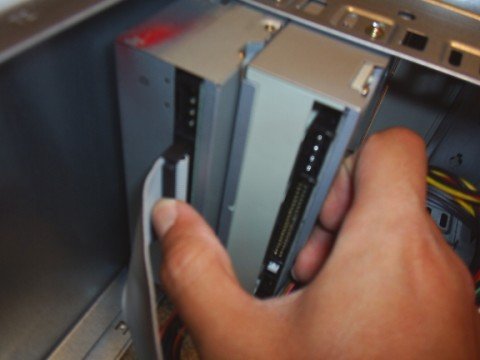
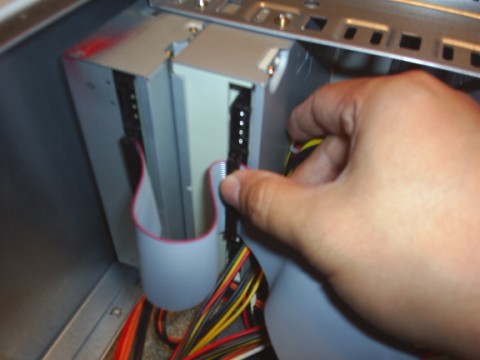
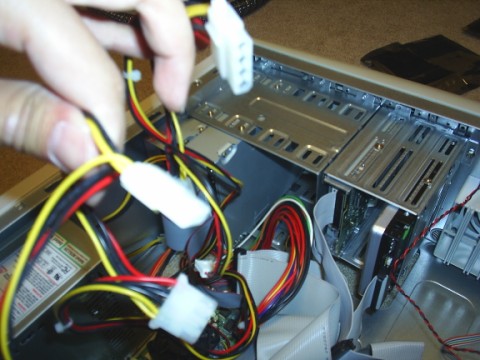
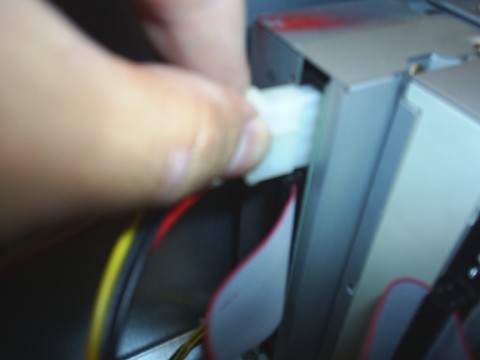
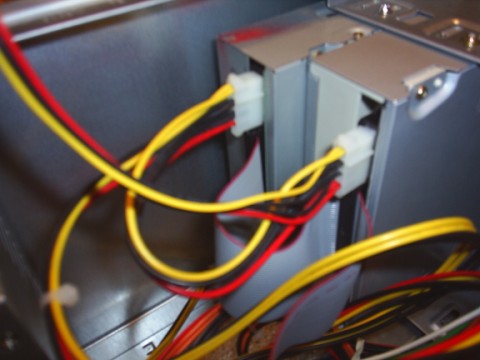
You would have to read the motherboards manual to determine how to plug in these wires. Those are the wires that pertain to the computer case power button, reset button, speaker, and some other things that is just best that you read it from the manual.
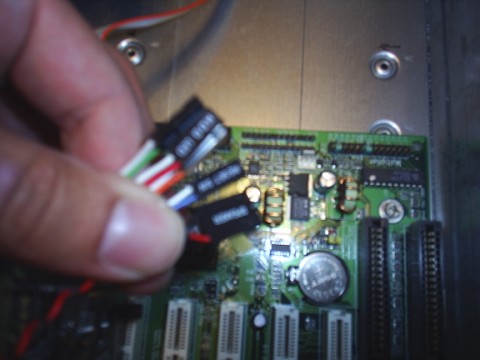
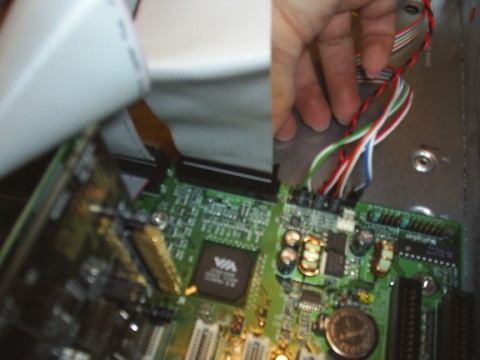
This is how it looks after everything is connected inside the case.
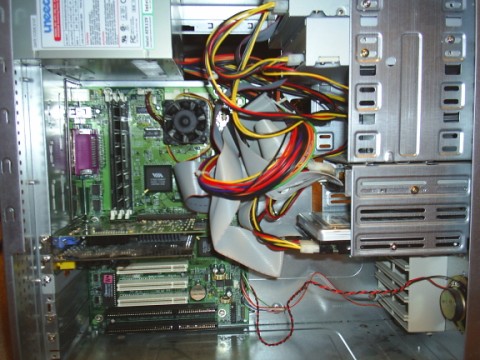
This is what it looks like in the back and the front of the case.
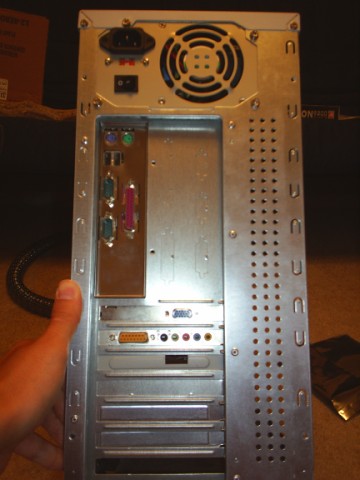
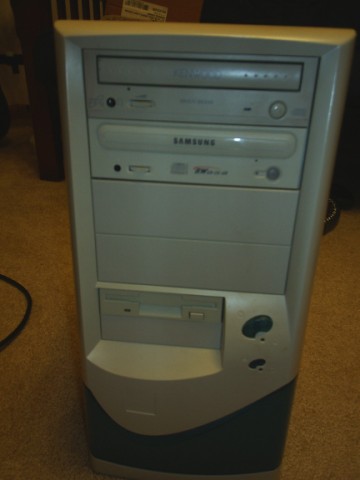
This is all for this tutorial on how to build a computer. I hope this helps you from now on in your journey of building computers.
Return from how to build a computer to free computer help
